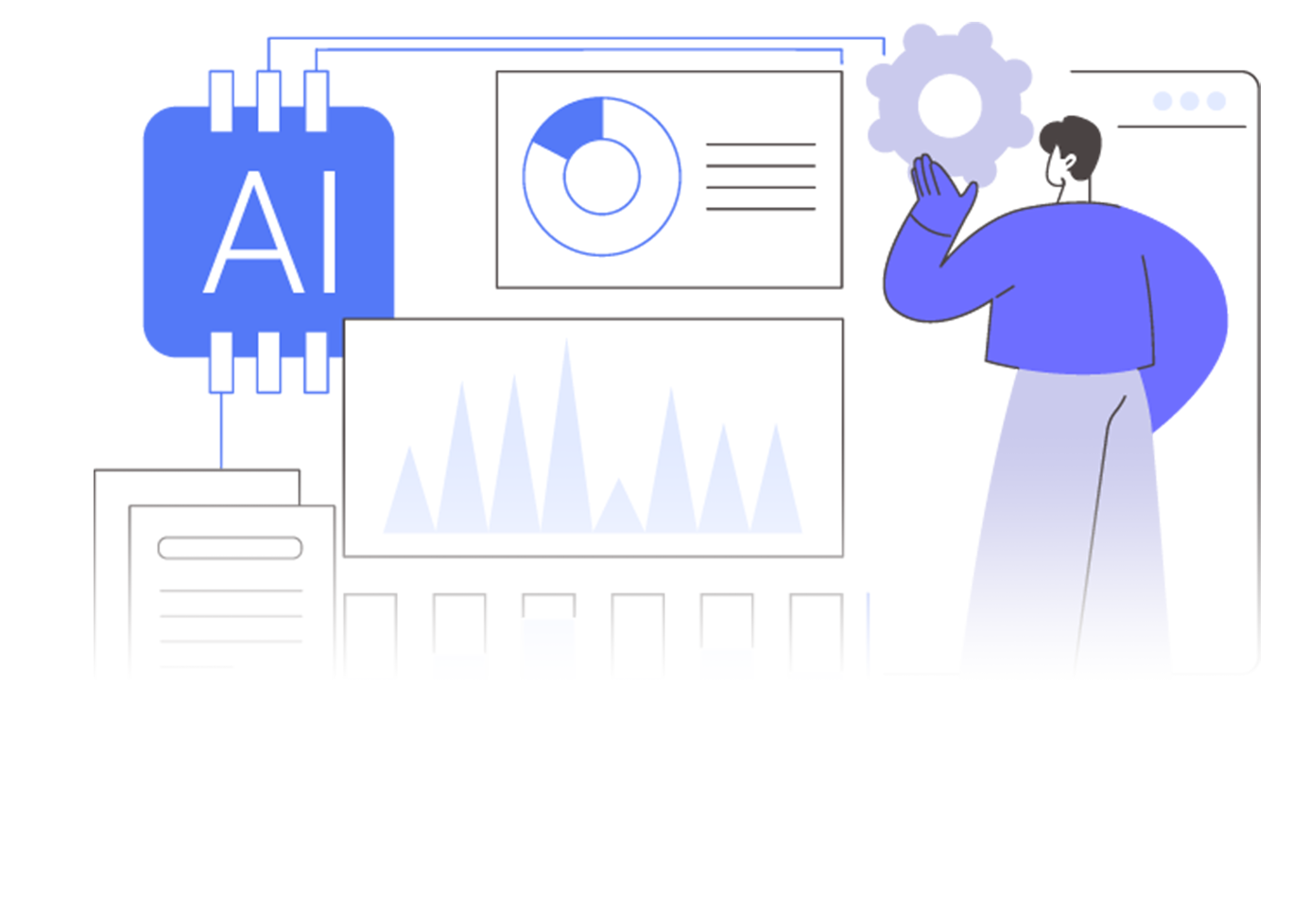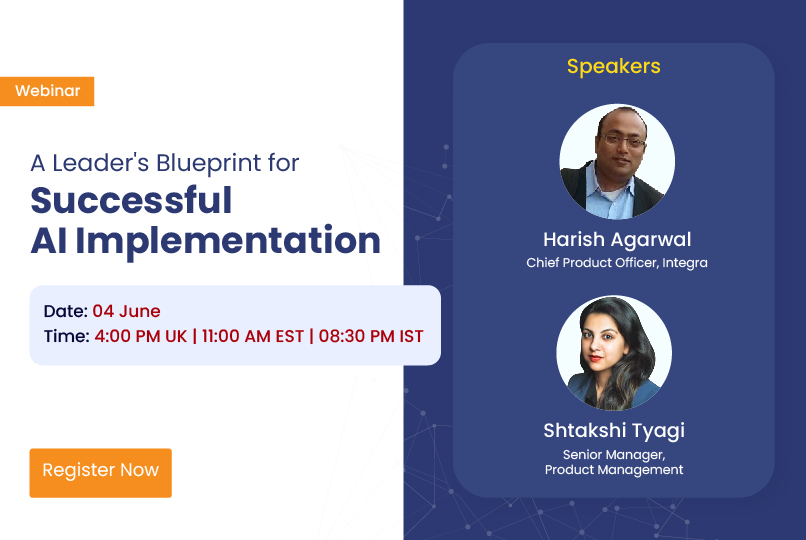Month: April 2024
Transforming Enterprises: Top 8 Advantages of AI-Driven Automation in Modern Businesses
In the swiftly evolving digital era, Artificial Intelligence (AI) automation stands at the forefront of corporate transformation, redefining the contours of how businesses operate and thrive. This technological marvel is not just an accessory; it’s a pivotal driver of change, reshaping the fundamental aspects of business processes, strategies, and customer interactions. The advent of AI automation ushers in a new epoch where speed, precision, and intelligence redefine the corporate world, heralding an era of unprecedented efficiency and innovation. Forbes Advisor reports that a significant majority of business owners, over 60%, are of the opinion that AI has the potential to boost productivity. Specifically, 64% of them anticipate that AI will enhance business productivity, while 42% are confident that it will simplify job processes. In this exploration, we delve into the top eight advantages of AI-driven automation, showcasing its transformative impact on modern enterprises.
1. Enhanced Efficiency and Productivity: Streamlining Business Processes
The realm of Enhanced Efficiency and Productivity through AI-driven automation signifies a groundbreaking shift in streamlining business processes. AI technology is not just about automation; it’s about smart automation that identifies, optimizes, and executes tasks with unprecedented precision and speed. This shift brings forth a new era where repetitive and time-consuming tasks are handled by AI systems, allowing human talent to focus on more strategic and creative aspects of business. Such an approach not only increases the throughput of operations but also minimizes errors, leading to a more efficient workflow. This efficiency translates into tangible productivity gains, as resources are allocated more effectively, and employees are empowered to contribute in more meaningful ways. The integration of AI in business processes is no longer a futuristic concept but a present-day necessity, driving enterprises towards greater success and innovation.
2. Data-Driven Decision Making: Harnessing the Power of AI
In the realm of Data-Driven Decision Making, the evolution and adoption of AI in large companies have been nothing short of revolutionary. A mere five years ago, less than 10% of large enterprises utilized machine learning or other AI forms. Fast forward to today, and a remarkable 80% of these companies have embraced AI technology. This dramatic shift reflects the growing recognition of AI’s power in transforming data into valuable insights, driving smarter, more informed decision-making processes. The integration of AI in analyzing vast datasets enables businesses to uncover hidden patterns, predict trends, and make strategic decisions based on data-driven intelligence, marking a significant advancement in how companies approach and utilize information.
3. Cost Reduction and ROI Enhancement: The Financial Impact of AI
The financial impact of AI in the domain of Cost Reduction and ROI Enhancement is profound and multifaceted. AI’s integration into various business operations leads to significant cost savings by automating routine tasks, optimizing resource allocation, and reducing human error. These efficiencies translate directly into reduced operational costs. Moreover, AI’s predictive analytics and decision-making capabilities can identify potential areas for cost-saving, further enhancing financial efficiency. The return on investment (ROI) from AI deployment is also notable, as it not only reduces costs but also opens up new revenue streams and improves service quality. This dual impact of cost reduction and enhanced ROI positions AI as a critical tool for financial health and sustainable business growth.
4. Improved Customer Experience: AI’s Personalized Approach
In 2011, Gartner foresaw a future where customer interactions would be increasingly automated, predicting that by 2020, 85% of these relationships would be managed without human interaction. This trend is expected to escalate, potentially reaching 90% as we approach the next decade. AI’s personalized approach in enhancing customer experience is revolutionizing the interaction between businesses and their clients. Through AI, companies can tailor experiences to individual preferences, behaviors, and history, providing a level of personalization previously unattainable. AI-driven tools like chatbots offer immediate, customized assistance, while recommendation engines present customers with options that align closely with their interests and past interactions. This not only boosts customer satisfaction by delivering relevant, engaging content but also fosters loyalty, as customers feel understood and valued. The integration of AI in customer service channels ensures a more intuitive, responsive, and personalized experience, setting new standards in customer engagement and satisfaction.
5. Enhanced Scalability and Flexibility: AI in Adapting to Market Dynamics
AI’s role in enhancing scalability and flexibility is crucial in today’s rapidly changing market dynamics. It equips businesses with the agility to adapt to evolving market demands and trends. With AI, companies can scale their operations up or down efficiently, responding to customer needs and market fluctuations in real-time. This adaptability is vital for sustaining competitiveness and growth. AI-driven insights also allow businesses to anticipate market changes, enabling proactive adjustments in strategies and operations. This level of responsiveness and flexibility is a significant advantage in the current business environment, where staying ahead of market trends is key to success.
6. Risk Management and Compliance: AI as a Protective Ally
In the sphere of Risk Management and Compliance, AI emerges as a crucial ally for businesses. It significantly enhances the ability to identify and mitigate various risks, including financial, operational, and reputational risks. By analyzing vast amounts of data, AI can predict potential issues before they escalate, allowing for preemptive action. Moreover, in the compliance arena, AI’s precision and efficiency ensure adherence to regulatory requirements, thereby reducing the likelihood of costly legal and compliance issues. This proactive approach to risk management and compliance through AI not only safeguards businesses but also instills confidence among stakeholders, ensuring a more secure and compliant operational environment.
7. Empowering Human Workforce: AI as an Enabler
AI’s role as an enabler in empowering the human workforce is a significant paradigm shift in the modern workplace. It liberates employees from mundane and repetitive tasks, allowing them to focus on more complex, creative, and strategic activities that require human insight and intelligence. This shift not only boosts employee morale and job satisfaction but also enhances their productivity and creativity. By handling routine tasks, AI provides employees the opportunity to develop new skills and engage in more meaningful work, fostering a more dynamic and innovative work environment. This empowerment of the human workforce through AI is key to driving growth and fostering a culture of continuous learning and development.
8. Innovation and Competitive Edge: AI Driving Market Leadership
AI is a driving force in fostering innovation and securing a competitive edge, propelling companies into market leadership positions. By enabling the development of cutting-edge solutions and personalized services, AI helps businesses stay ahead in their respective industries. It facilitates rapid experimentation and iteration, allowing companies to quickly adapt to market changes and consumer demands. This capacity for continuous innovation is critical in maintaining relevance and leading the market. Moreover, AI’s predictive analytics provide insights that can be leveraged for strategic planning, ensuring businesses are always one step ahead of their competitors. In this dynamic business environment, AI is not just an advantage but a necessity for staying at the forefront of industry trends and customer needs.
In conclusion, AI’s role in modern businesses is transformative, offering unmatched benefits in efficiency, data-driven decision making, cost management, customer experience, scalability, risk management, workforce empowerment, and innovation. These advancements not only enhance current operations but also prepare businesses for future challenges and opportunities. If you’re looking to integrate AI into your business strategy and harness its full potential, our team is ready to assist. We offer expert consultation to guide you through the complexities of AI implementation, ensuring that your business remains at the forefront of innovation and market leadership. Let us help you navigate this journey towards an AI-driven future.


